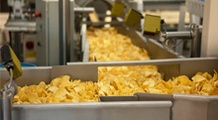For companies operating in sectors that deal with food, drink or medication, health and safety are by far their biggest priority. High standards of hygiene and sanitation are expected all the way from production to the end user. Leakages will happen and are an inevitable part of all industry and maintenance. These lubricants won’t differentiate regarding what material they come in contact with. Therefore it is important for these industries to select the right lubricant for the job, but there is a maze of regulations and registrations that must be met. This article will delve into the components of a food-grade lubricant and what companies need to watch out for when selecting one.

What is a food grade lubricant?
A food-grade lubricant is essentially an industrial product and must perform the same technical functions as any other grease or oil. They must provide against typical issues such as protection against wear and tear, friction, corrosion and oxidation, disperse heat and transfer power. They must also be compatible with rubber and other sealing materials and sometimes even provide a sealing function.
In addition, another key aspect is different that companies within the food and drugs business that lubricants must resist degradation from food products, chemicals and water/steam, must exhibit neutral behaviour towards plastics and elastomers and must also have the ability to dissolve sugars. These oils must also comply with food/health and safety regulations, as well as be physiologically inert, tasteless, odourless and internationally approved.
Lubricants can be subjected to concentrated environmental pollutants. For example, a bread-milling environment generates substantial amounts dust. Although not as hard as other types of dust, it still presents a problem for filtration. A meat plant requires stringent steam cleaning at all times, so there is an extremely high risk of water contamination is high.
Another aspect of lubrication contamination that poses a risk to food-grade lubricants is the growth and development of micro organisms such as bacteria, yeast and fungi. While these can be a risk in industrial environments, the opportunity for contamination in a food production setting is greatly increased. Food grade lubricants come in a number of categories which are provided by the National Sanitation Foundation (NSF). We will discuss these categories below.

NSF H1 lubricants
These are lubricants created for incidental food contact and used where contact may potentially occur. This contact is restricted to a trace amount with no more than 0.0001% permitted or the product will be considered unsafe for consumption. The formulation of H1 lubricants can only contain certain types of base stocks, additives and thickeners that are highlighted by the FDA.
NSF H2 lubricants
H2 lubricants are predominantly used on equipment in food processing facilities, but there must absolutely be no possibility of contact with food. Although most substances used to make lubricants are accepted in H2 formulations, there are restrictions due to the risks in toxicology and other considerations in regards to production and implementation. H2 lubricants cannot contain carcinogens, mutagens, teratogens, mineral acids or heavy metals.
NSF H3 lubricants
H3 lubricants are food-grade lubricants that are typically edible oils, used to prevent rust on hooks, trolleys and similar equipment. A key difference with these food grade lubricants and others is that these lubricants may only contain edible oils that satisfy FDA 21 CFR 172.860 (these include corn, soybean or cottonseed oils), types of mineral oils that meet FDA 21 CFR 172.878, and oils that are generally recognised as safe under either FDA 21 CFR 182 or FDA 21 CFR 184.
The Nevastane range
Guaranteeing food safety to customers is of utmost importance in today’s food/medicine processors. With this challenge in mind, TotalEnergies has created the Nevastane range, a group of NSF H1 registered products for use in industries where incidental contact with food can occur. These products allow you to avoid the consequences created if the lubricants come into contact with food accidentally.

